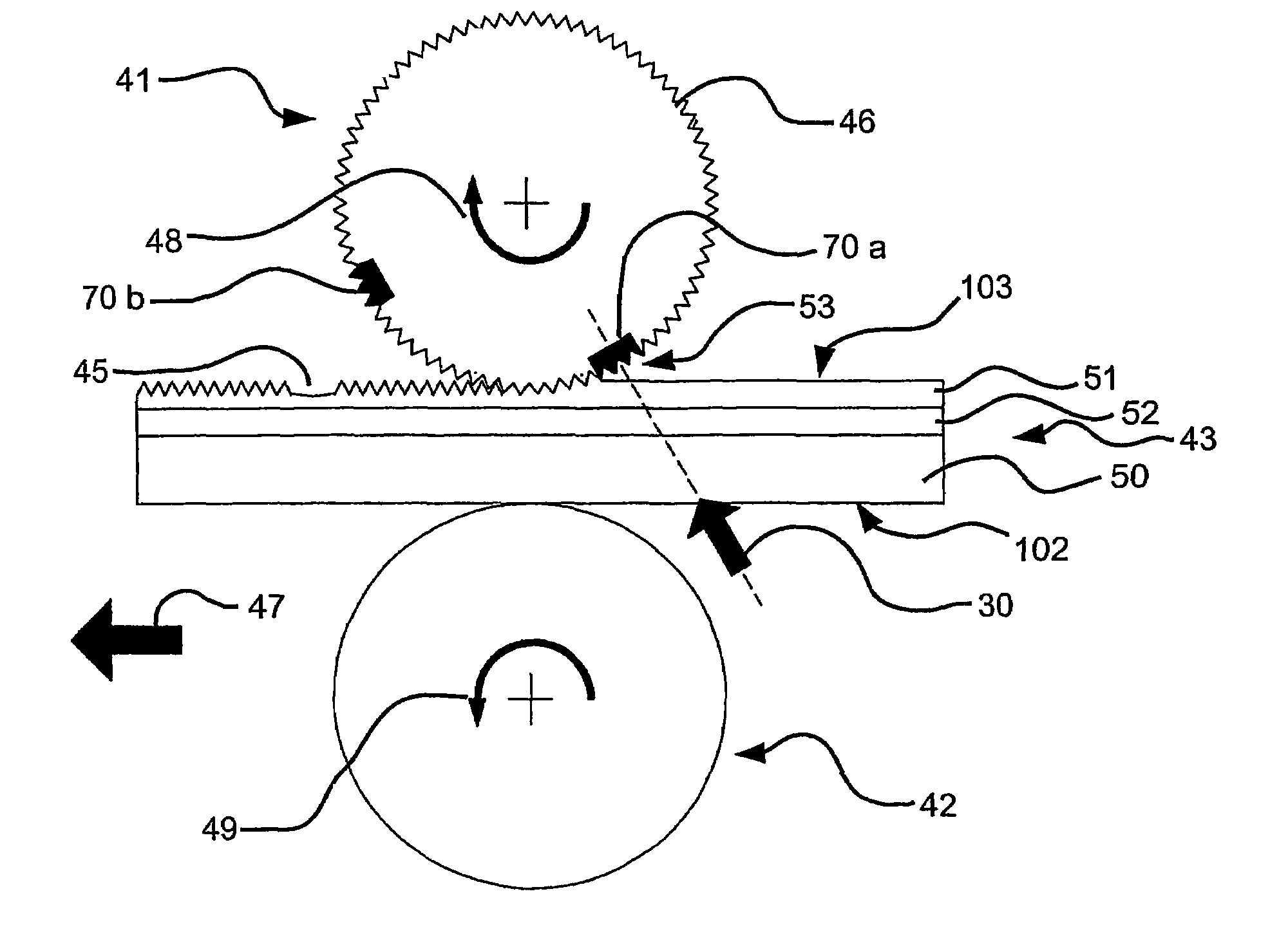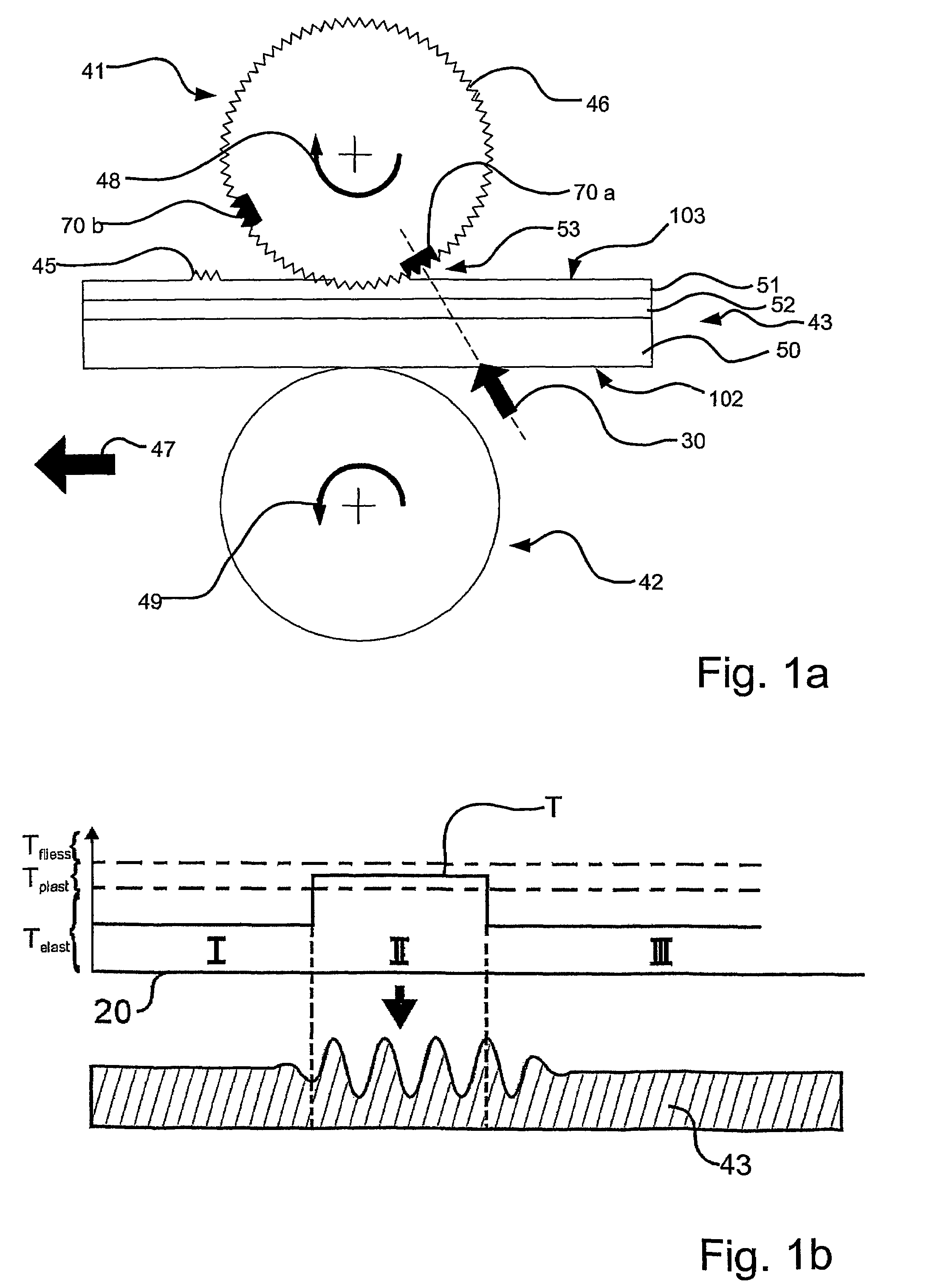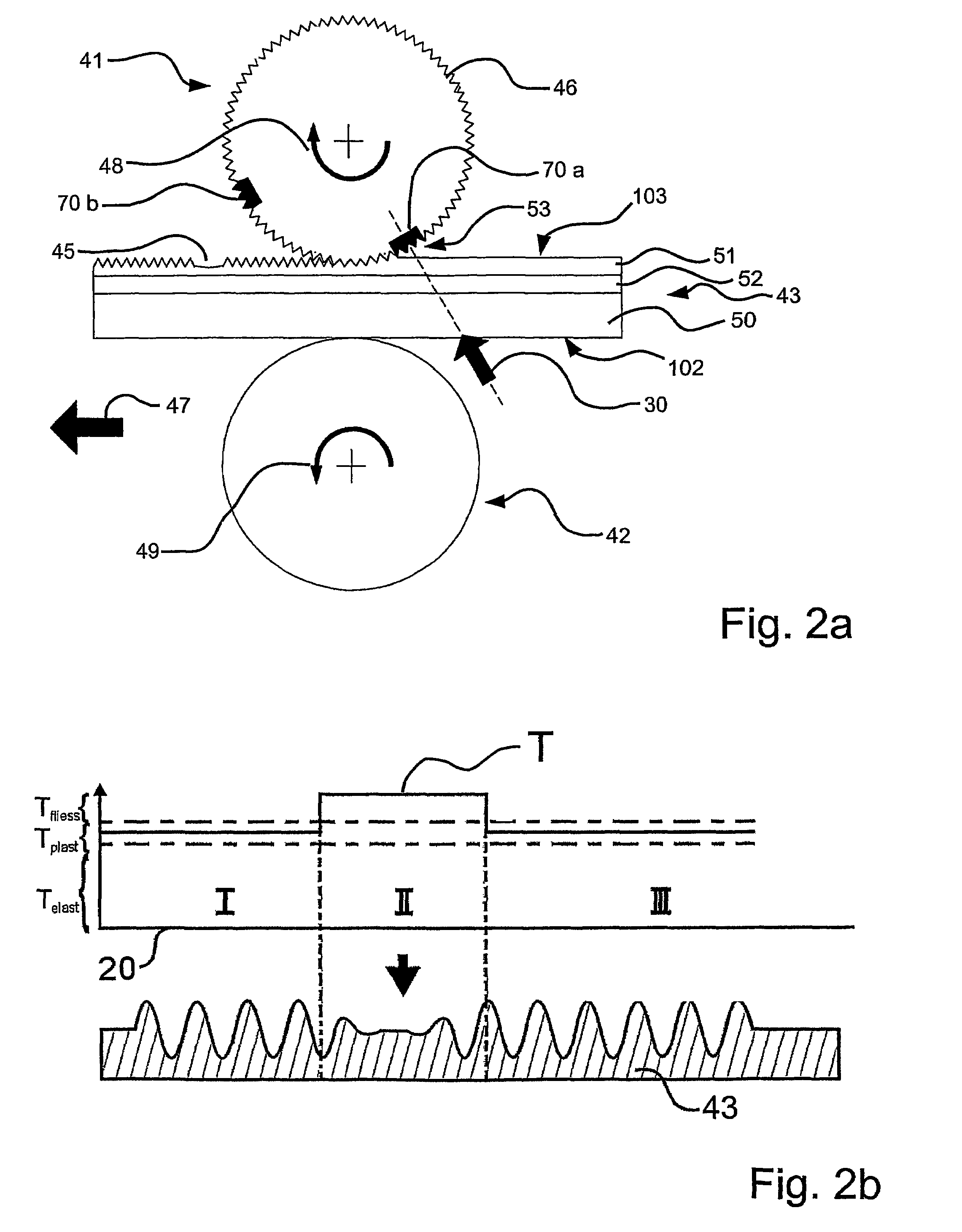Laser-supported reproduction method
a technology of laser and reproduction method, which is applied in the direction of printing process, decorative arts, domestic objects, etc., can solve the problems of long equipment setting time, high cost, and inconvenient process, and achieves a high level of absorption, facilitates galvanic shaping of diffractive structure of master, and improves the effect of absorption
- Summary
- Abstract
- Description
- Claims
- Application Information
AI Technical Summary
Benefits of technology
Problems solved by technology
Method used
Image
Examples
second embodiment
[0097]In this second embodiment of the process, only the regions of the replication surface which are complementary to the replication surface portions 70a, b irradiated with the laser beam 30, that is to say which are complementary to the heat combination regions, are shaped.
[0098]The extinction of a latent heat image produced in that way on the replication surface can be effected in a similar manner to the extinction procedure described with reference to FIG. 1a.
[0099]The principle of carrying out the process as shown in FIG. 2a is again diagrammatically shown in FIG. 2b in the same view as in FIG. 1b, wherein therefore the temperature pattern T is different from that shown in FIG. 1b.
[0100]The temperature profile T in FIG. 2b of the replication surface on passing through the replication gap 53 is in the plastic temperature range Tplast in the regions I and III, whereas in the region II the temperature is within the flow temperature range Tfliess.
[0101]In the region I, upon cont...
first embodiment
[0119]The process for producing a marking and control of the laser beam 30 as well as structural or functional features are similar to the configurations and description relating to the apparatus in FIG. 1a so that it is also possible to produce positive and negative images with the apparatus of FIG. 6a.
PUM
| Property | Measurement | Unit |
|---|---|---|
| angle | aaaaa | aaaaa |
| spacing angle | aaaaa | aaaaa |
| temperature | aaaaa | aaaaa |
Abstract
Description
Claims
Application Information
 Login to View More
Login to View More - R&D
- Intellectual Property
- Life Sciences
- Materials
- Tech Scout
- Unparalleled Data Quality
- Higher Quality Content
- 60% Fewer Hallucinations
Browse by: Latest US Patents, China's latest patents, Technical Efficacy Thesaurus, Application Domain, Technology Topic, Popular Technical Reports.
© 2025 PatSnap. All rights reserved.Legal|Privacy policy|Modern Slavery Act Transparency Statement|Sitemap|About US| Contact US: help@patsnap.com



